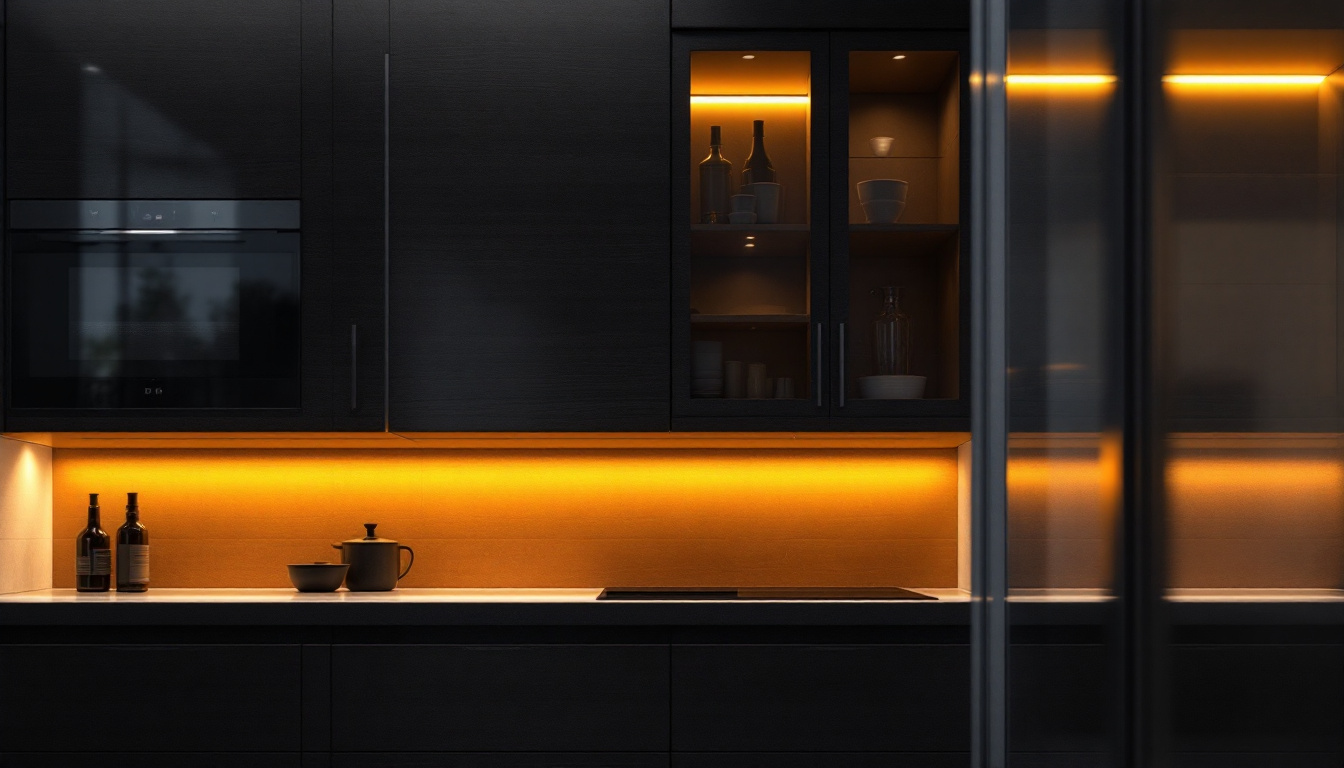
In the realm of lighting installation, efficiency and effectiveness are paramount. Wall mounted occupancy sensors have emerged as a critical component in modern lighting systems. These devices not only enhance energy conservation but also improve user experience by automating lighting based on occupancy. For lighting contractors, understanding the benefits and applications of these sensors can lead to more successful projects and satisfied clients.
Occupancy sensors work by detecting the presence of individuals in a room and automatically adjusting the lighting accordingly. This technology is particularly valuable in commercial settings, where lighting needs can vary significantly throughout the day. By integrating occupancy sensors into lighting installations, contractors can offer clients a solution that enhances functionality while reducing energy costs.
Moreover, wall mounted occupancy sensors come equipped with advanced features such as adjustable sensitivity and time delay settings, allowing for customization based on specific environments. For instance, in a busy office space, a contractor might set the sensor to have a shorter time delay to ensure lights turn off quickly when a room is unoccupied, thereby maximizing energy savings. In contrast, a conference room may benefit from a longer delay to accommodate meetings that run over time. This level of adaptability not only caters to the unique needs of each space but also demonstrates a contractor’s attention to detail and commitment to providing tailored solutions.
Additionally, the integration of occupancy sensors with smart building technologies has opened new avenues for energy management. These sensors can communicate with other smart devices, such as HVAC systems, to optimize energy usage further. For example, when a room is detected as unoccupied, the occupancy sensor can signal the HVAC system to adjust the temperature, thus preventing unnecessary heating or cooling. This synergy between lighting and climate control not only enhances comfort but also contributes to a more sustainable approach to building management, appealing to environmentally conscious clients who prioritize green solutions.
One of the most compelling advantages of wall mounted occupancy sensors is their ability to significantly reduce energy consumption. Traditional lighting systems often rely on manual switches, which can lead to lights being left on in unoccupied spaces. Occupancy sensors eliminate this issue by automatically turning lights off when no one is present.
In commercial environments, where large areas are often illuminated, the energy savings can be substantial. By ensuring that lights are only on when needed, businesses can lower their utility bills and contribute to a more sustainable environment. This aspect of energy efficiency is not only appealing to clients but can also be a strong selling point for lighting contractors.
Beyond energy savings, wall mounted occupancy sensors improve the overall user experience. In settings such as offices, restrooms, and hallways, the convenience of automatic lighting enhances safety and comfort. Users no longer have to fumble for switches in darkened areas or worry about lights being left on unnecessarily.
Moreover, these sensors can be programmed to adjust the lighting levels based on the time of day or specific activities. For example, in a conference room, the lights can dim automatically when a presentation begins, creating a more conducive environment for focus and engagement. This level of customization can significantly elevate the quality of a space, making it more appealing to end-users.
Passive infrared (PIR) sensors are among the most common types of occupancy sensors used in wall-mounted applications. These devices detect changes in infrared radiation, which occurs when a person moves within the sensor’s field of view. PIR sensors are particularly effective in areas where movement is expected, such as corridors and break rooms.
One of the advantages of PIR sensors is their low cost and ease of installation. They require minimal wiring and can often be mounted directly onto walls or ceilings. However, it is essential to consider their limitations, such as sensitivity to temperature changes and the need for a clear line of sight to detect movement effectively.
Ultrasonic sensors operate on a different principle, using sound waves to detect occupancy. These sensors emit ultrasonic waves and measure the reflection of those waves off moving objects. This technology allows for a wider detection range and can pick up movement even when a person is stationary, making them ideal for spaces where occupants may be sitting still, such as offices or classrooms.
While ultrasonic sensors can be more expensive than PIR sensors, their ability to detect occupancy in a variety of scenarios can justify the investment. Additionally, they can be used in combination with other systems for enhanced functionality, such as integrating with HVAC systems to optimize climate control based on occupancy.
For those seeking the best of both worlds, dual technology sensors combine the features of both PIR and ultrasonic sensors. By utilizing both detection methods, these sensors can minimize false triggers and provide more reliable occupancy detection. This is particularly beneficial in complex environments where movement patterns may vary significantly.
While dual technology sensors tend to be more expensive, their accuracy and versatility can make them a worthwhile investment for lighting contractors looking to deliver top-tier solutions to their clients. Understanding the different types of sensors available allows contractors to make informed decisions based on the specific needs of each project.
When installing wall mounted occupancy sensors, proper placement is crucial for optimal performance. The sensor’s field of view should be aligned with expected movement patterns to ensure that it can effectively detect occupancy. In general, sensors should be installed at a height of around 6 to 8 feet, allowing for a broad coverage area.
Contractors should also consider the layout of the space. In larger areas, multiple sensors may be required to ensure complete coverage. Additionally, obstacles such as furniture or walls can obstruct the sensor’s line of sight, leading to reduced effectiveness. Conducting a thorough assessment of the space before installation can help mitigate these issues.
Another important consideration is how wall mounted occupancy sensors will integrate with existing lighting systems. Many modern sensors are designed to work seamlessly with various types of lighting, including LED and fluorescent fixtures. However, compatibility should always be verified before installation to avoid any operational issues.
Additionally, contractors should consider how the sensors will interact with other building systems, such as HVAC or security systems. For instance, integrating occupancy sensors with HVAC controls can lead to even greater energy savings by adjusting heating and cooling based on occupancy levels. This holistic approach to system integration can enhance the overall effectiveness of the lighting installation project.
One of the common challenges associated with occupancy sensors is the potential for false triggers. This can occur when the sensor detects movement from pets, passing vehicles, or even changes in temperature. Such false activations can lead to unnecessary lighting use, negating the energy-saving benefits of the system.
To mitigate this issue, contractors can select sensors with adjustable sensitivity settings. This allows for fine-tuning based on the specific environment and reduces the likelihood of false triggers. Additionally, educating clients about the importance of proper sensor placement can further minimize this challenge.
Like any technology, wall mounted occupancy sensors require regular maintenance to ensure optimal performance. Dust, debris, and other obstructions can hinder the sensor’s ability to detect occupancy accurately. Contractors should recommend routine cleaning and inspection as part of the overall maintenance plan for the lighting system.
Furthermore, educating clients about the importance of keeping the sensors clear of obstructions can enhance the longevity and effectiveness of the installation. Providing a simple maintenance checklist can empower clients to take an active role in the upkeep of their lighting systems.
In a recent project involving a large corporate office, wall mounted occupancy sensors were installed throughout the facility. The sensors were strategically placed in common areas, conference rooms, and individual offices. As a result, the office experienced a significant reduction in energy consumption, leading to lower utility costs.
Feedback from employees indicated a marked improvement in comfort and convenience, with many appreciating the automatic lighting adjustments during meetings and collaborative sessions. This project exemplifies how wall mounted occupancy sensors can enhance both energy efficiency and user experience in a professional setting.
Another successful implementation occurred in a local school district, where occupancy sensors were installed in classrooms, hallways, and restrooms. The sensors not only helped reduce energy costs but also improved safety by ensuring that lights were always on in occupied areas.
Teachers reported that the automatic lighting adjustments created a more conducive learning environment, allowing students to focus without distractions. The project highlighted the versatility of wall mounted occupancy sensors in diverse settings, showcasing their potential to meet the needs of various clients.
Wall mounted occupancy sensors represent a significant advancement in lighting technology, offering numerous benefits for both contractors and clients. From energy efficiency and enhanced user experience to improved safety and convenience, these devices can transform lighting installation projects into more effective and sustainable solutions.
By understanding the different types of sensors available, installation considerations, and potential challenges, lighting contractors can make informed decisions that lead to successful project outcomes. As the demand for energy-efficient solutions continues to grow, integrating wall mounted occupancy sensors into lighting installations will undoubtedly become a standard practice in the industry.
Ultimately, embracing this technology not only benefits clients but also positions contractors as leaders in the evolving landscape of lighting design and installation. As the industry continues to innovate, those who adapt and incorporate advanced solutions like occupancy sensors will thrive in an increasingly competitive market.
Ready to elevate your lighting installation projects with the latest in occupancy sensor technology? Look no further than LumenWholesale for all your lighting needs. We provide contractors with spec-grade, high-quality occupancy sensors at unbeatable wholesale prices, ensuring you get the best value for your investment. With our commitment to cutting out the middleman, you can trust that you’re getting superior products without the inflated markups. Plus, with free shipping on bulk orders, you can stock up on the reliable, high-performance lighting solutions your projects deserve. Don’t compromise on quality or cost—choose LumenWholesale for the perfect blend of affordability and convenience. Wholesale Lighting at the Best Value is just a click away.

Explore the essential considerations for lighting contractors when working with recessed fluorescent lights.

Discover how motion spotlights are transforming the landscape for lighting contractors, offering a competitive edge through energy efficiency, enhanced security, and innovative design.

Explore the nuances of solar lighting and discover whether direct sunlight is essential for optimal performance.

Discover why LED tape cabinet lighting is becoming a must-have for lighting contractors.